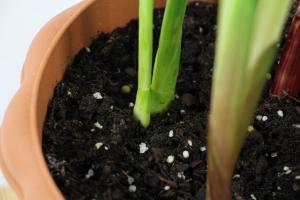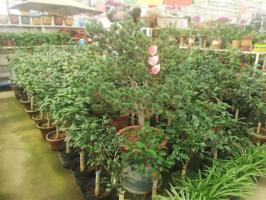Introduction
Potted plants require regular watering to ensure their survival and growth. However, it can be challenging to water them consistently, especially if one is often busy or away from home. A self-watering system is an easy and effective solution to this problem. In this article, we will discuss how to make a self-watering system for potted plants.
Materials
To create a self-watering system, you will need the following materials:
A plastic container with a lid
A watering wick – this can be made from cotton rope or strips of fabric
A drill or sharp object to create holes in the container lid
A potting soil mix
A potted plant
Instructions
Follow these steps to create your self-watering system:
Drill or poke several holes in the lid of your plastic container.
Make a watering wick by cutting a length of cotton rope or fabric strip that reaches the bottom of your potted plant's soil and sits on top of the container lid.
Place the watering wick through one of the holes in the lid, making sure it reaches the bottom of the plastic container.
Fill the container with water, leaving enough space for your potted plant.
Place the lid with the watering wick back on the container and set your potted plant on top of the lid, making sure the wick touches the soil.
Add potting soil around your potted plant as needed.
How it Works
The self-watering system works by using the principle of capillary action. When the soil in the potted plant is dry, it will draw water up from the container through the watering wick. The water will continue to be drawn up by the soil until it is adequately moistened, at which point the capillary action stops. This system ensures that your potted plant will have access to water whenever it needs it, without any additional effort from you.
Tips for Success
Here are a few tips to help ensure the success of your self-watering system:
Choose a container that is large enough to hold a sufficient amount of water, so you don't need to refill it frequently.
Use a high-quality potting soil mix that will retain moisture well.
Make sure the watering wick sits on top of the container lid, so it is in contact with the water.
Check the water level in the container occasionally to make sure it hasn't run dry.
Use this system mainly for plants that are not thirsty and don't need frequent watering, to ensure the soil does not become waterlogged.
Conclusion
Creating a self-watering system for your potted plants is an easy and effective way to ensure they remain healthy and hydrated, even when you're away from home or too busy to water them consistently. With just a few materials and some basic steps, you can create a system that works by using the natural process of capillary action. Follow the tips for success, and you'll be on your way to having a thriving indoor garden that takes care of itself.

 how many times do yo...
how many times do yo... how many planted tre...
how many planted tre... how many pine trees ...
how many pine trees ... how many pecan trees...
how many pecan trees... how many plants comp...
how many plants comp... how many plants can ...
how many plants can ... how many plants and ...
how many plants and ... how many pepper plan...
how many pepper plan...




























